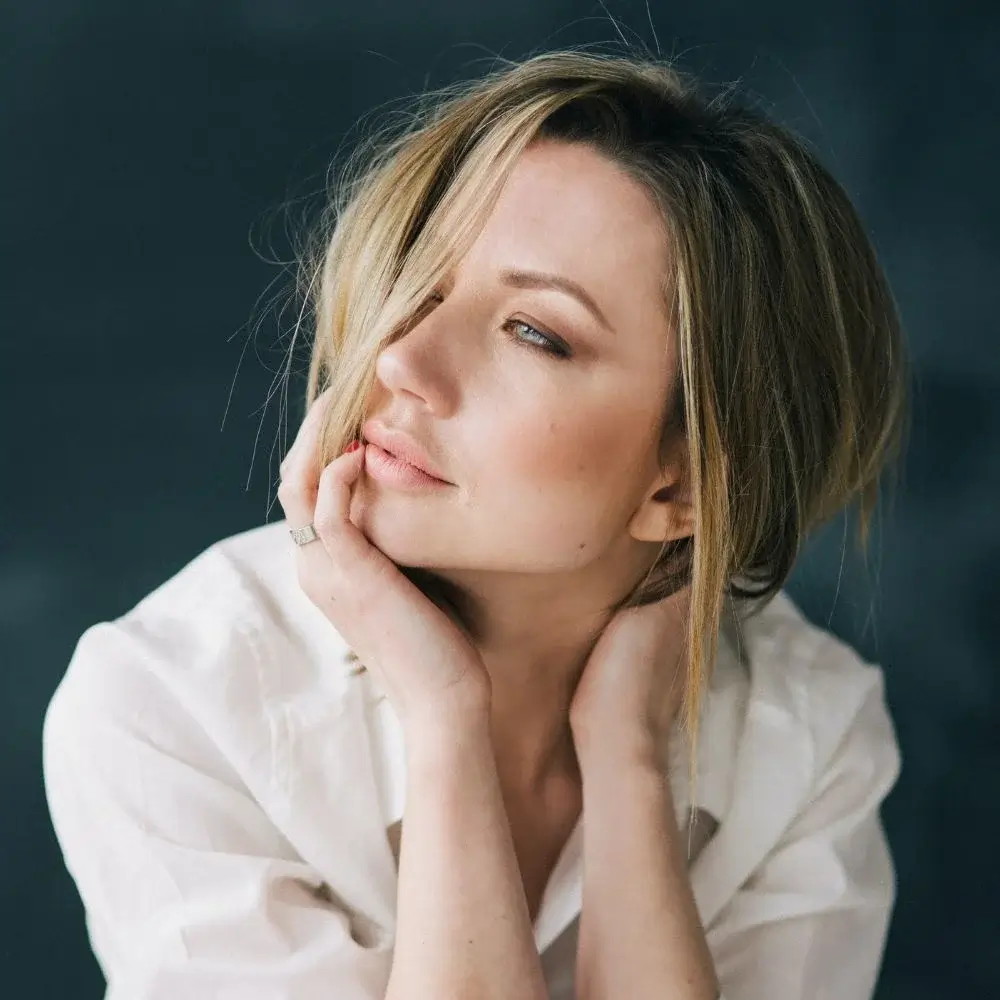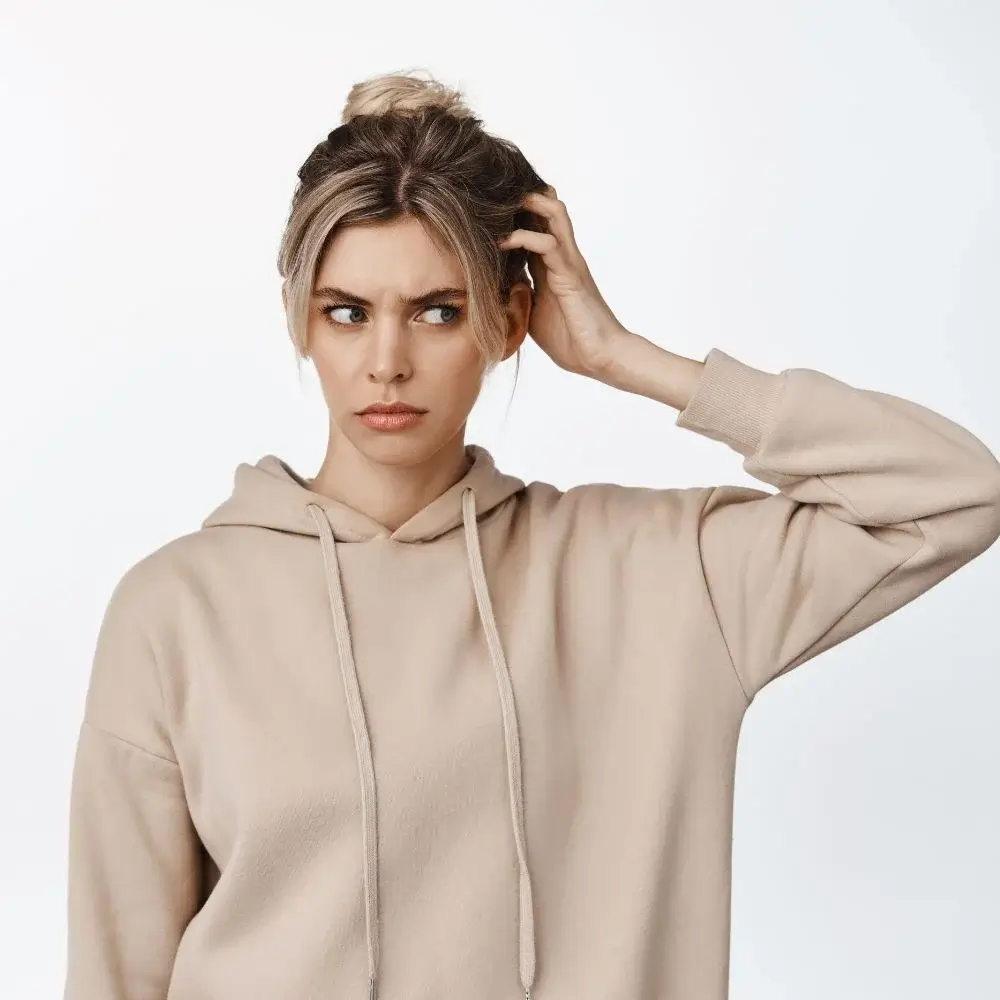Do you have that one friend who can’t seem to stop raving about how dry shampoo has changed their life? You’ve heard enough about its benefits, but you’re still not convinced, especially if you have dark hair and are worried about white residue being left behind on your scalp. In this blog post, we will answer a common question - is dry shampoo suitable for all hair colors? We’ll discuss its suitability for different hair types, its ingredients, and tips on how to apply it without leaving any visible residue. Whether you have blonde or dark hair, we have valuable insights to help you decide whether to include dry shampoo products in your hair care routine.
The purpose of dry shampoo is to absorb oil and refresh your hair without washing it. It’s a convenient and time-saving option that allows you to extend your hairstyle by removing excess oil that makes your hair look greasy. However, dry shampoo can have different effects on different hair colors. For people with light-colored hair, such as blondes and those with highlights, dry shampoo is easy to apply, and its residue blends well with their hair color. On the other hand, dry shampoo can leave visible residue for people with dark hair, making it less popular among this group.
The visible residue on dark hair results from the dry shampoo ingredients. Most dry shampoos use a combination of aluminum starch, kaolin, or baking powder, all of which are white. When applied to dark hair, the powder can be visible and challenging to remove, leaving behind a grayish color that’s visibly different from the rest of your hair. However, several dry shampoos now have colored formulas meant for darker hair. These products have small amounts of color added to them, which blend better with dark hair, making them more suitable for those with dark hair.
Choosing the right product for your hair type is crucial; checking the ingredients' labels will help. Avoid products with talc or other abrasive ingredients that dry out and damage your hair. Look for products with natural ingredients like cornstarch, rice starch, or oatmeal, which absorb the oil but won’t damage your hair. Always shake the bottle well before use, and spray the shampoo at least six inches from your hairline. Allow it to sit briefly before brushing or combing the powder.
Another tip to avoid visible residue from dry shampoo on dark hair is to apply it the night before. This method allows the product to absorb the oil from your hair while you sleep, reducing the chances of visible residue being left behind on your scalp. If you’re still unsure about using dry shampoo, you can opt for natural alternatives like apple cider vinegar.
So, is dry shampoo suitable for all hair colors? The answer is it depends. Visible residue on dark hair is a common problem, but it’s solvable with the right product and application techniques. Moreover, colored formulas have allowed those with dark hair to enjoy the benefits of dry shampoo without worry. By looking for products with natural ingredients, shaking the bottle before use, and applying the product the night before, you can have clean hair that looks and feels refreshed. Try different products that work best for your hair type, and consult your hairstylist if in doubt. With the right approach, dry shampoo can be a convenient, easy-to-use alternative that saves time and leaves your hair looking fantastic.
We all know the struggle of squeezing in a quick shower before a busy day or a night out. But what if you could skip a hair wash altogether and still have fresh-looking locks? That's where the best dry shampoo comes in. It's the ultimate time saver for the girl on the go. And we've done all the research for you, so you don't have to spend forever sifting through reviews and options. Follow the link to discover our top pick for the best dry shampoo to leave your hair looking and feeling fabulous, even on your busiest days. Trust us, you won't regret making it a part of your routine.
What makes a dry shampoo suitable for color-treated hair?
Dry shampoos designed for color-treated hair prioritize sulfate-free formulas, others for preserving vibrancy. These formulations often feature UV filters, providing other protection against sun-induced fading. Incorporating natural elements like aloe vera or chamomile, these specialized dry shampoos absorb oil and nourish it, extending the life of your color. When seeking the ideal dry shampoo for your colored locks, prioritize those explicitly labeled as "color-safe" to ensure a harmonious balance between cleanliness and color retention.

What is the difference between tinted and untinted dry shampoos?
Tinted and untinted dry shampoos cater to diverse preferences and needs. Tinted variants infuse pigments, match hair colors, conceal roots, and add volume with a cosmetic touch. In contrast, untinted options go on colorless, making them universally suitable for all hair shades. The decision between the two depends on personal preference—whether you prefer a seamless, color-neutral application or a targeted approach to address root visibility. Tinted dry shampoos offer a nuanced solution for those wanting to blend effortlessly with their specific hair color, enhancing both cleanliness and aesthetics.

What are some tips for using dry shampoo on curly hair?
Curly hair requires a nuanced approach when using dry shampoo. Apply the product in sections, focusing on the roots to balance cleanliness and preserve curl integrity. Gently massage the dry shampoo, avoiding excessive manipulation that could disrupt natural curls. Opt for a lightweight, residue-free formula to prevent buildup, ensuring curls remain defined and bouncy. Consider applying dry shampoo at night to allow optimal absorption while you sleep, waking up to refreshed curls without compromising their natural beauty. Embracing these tailored tips ensures that dry shampoo complements your curly hair care routine.

How does the weather affect the effectiveness of dry shampoo?
Weather plays a pivotal role in influencing the efficacy of dry shampoo. Excess moisture can interact with the product in humid conditions, potentially compromising its oil-absorbing capabilities. Conversely, in dry climates, dry shampoo may function more efficiently. Adjust the amount applied based on climate, opting for a lighter touch in humid weather to prevent residue and a slightly more generous application in drier conditions. Recognizing and adapting to the dynamic relationship between weather patterns and your dry shampoo routine ensures consistent and optimal results throughout changing seasons.

How should I adjust my dry shampoo routine for different seasons?
Tailoring your dry shampoo routine to the seasons is essential for optimal hair health. Increased oil production may necessitate more frequent application in warmer months, ensuring a consistently refreshed look. Conversely, extending usage intervals is prudent in colder months, where hair tends to be drier. Consider transitioning to a hydrating dry shampoo formula during winter to combat potential dryness, adapting your approach to accommodate seasonal variations. This seasonal awareness ensures that your dry shampoo routine remains a flexible and effective component of your year-round hair care regimen.
Should I use a clarifying shampoo alongside dry shampoo?
Integrating a clarifying shampoo into your routine when using dry shampoo regularly is beneficial. While dry shampoo effectively refreshes hair, it can lead to product buildup over time. A clarifying shampoo acts as a reset button, eliminating residue and preventing potential scalp issues. Incorporate it into your routine once a week or as needed, ensuring your hair remains free from buildup. Combining the benefits of dry and clarifying shampoos, this dual approach ensures a balanced and consistently revitalized hair experience, addressing both cleanliness and long-term scalp health.







